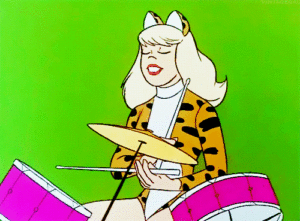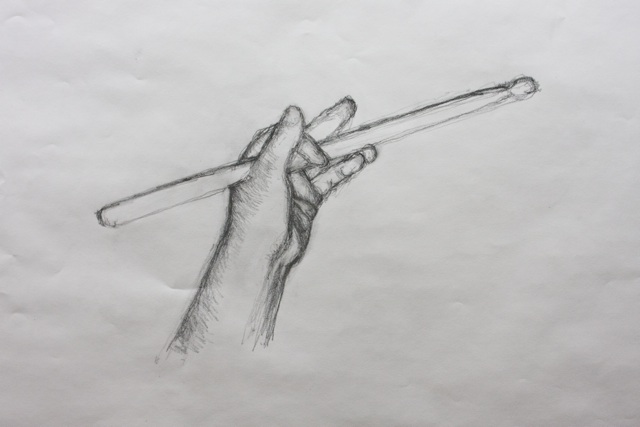To grip or not to grip, that is the question. How to hold your sticks using traditional grip.
Much has been written on this subject, yet, many drummers do not know how to hold their sticks in “trad” grip, even though they have seen it, or worship drum idols that use it. I hope a little history and direction will help more percussionists honor the art form, and benefit from learning this often misunderstood technique.
History
Dating back to the 1400-1500’s, this grip is called traditional because it descends from military marching drummers who carried a snare drum on a sling hung around their neck or one shoulder, with the drum riding closer to one hip than the other and tilted slightly for easier reach. This dictated the drummer to play “underhanded” with the left hand, and using a “match grip” (like a hammer) with the right hand, while marching. The first drumset players appeared around 1840 when drummers started sitting down. Since most of those players were originally marching drummers, traditional grip continued to be the orthodox way of playing, and snare drums continued to be slanted within the drum set arrangement. Although the traditional grip technique is more difficult to master, it is embedded into our percussion culture. It’s now used mostly used in jazz, and marching drum line genres.
Grab a stick!
- Hold the left arm, palm down, fingers together. Place the stick in the socket between the thumb and 1st finger (about 1/3 of the butt end of the stick above the hand). Grip should be tight enough on the stick to cause a slight drag if you try to pull it out from the hand.
- Keeping the 3rd and 4th fingers closed, turn the arm to the left and the stick will naturally fall into position across the 3rd finger.
- Bring your arm in towards your body. Curl your 4th and 5th fingers so that the stick is laying on the nail bed of finger 4 with finger 5 (your pinky) supporting finger 4.
- Bring your index finger around, and cross your thumb between the 1st and 2nd knuckles of your index finger (like a “T”). At this point, and this usually gets a small chuckle from students, you are flipping me off. Yes, your middle finger is “out there” about an inch from the stick. Bring it in a bit so it’s not an extreme flip-off. Some instructors teach that the middle finger is to be straight, but a slight bend is more comfortable. Be sure not to arch the wrist back, but keep it straight.
- For the right hand, a simple match grip is fine. At this point if you check your fulcrums (where the point of balance is on your sticks), they should match. There should be butts sticking out on both hands, and it should be even.
- Now you are holding your sticks in front of you with your wrist on the left hand, “trad” grip, and the match grip right hand. It should be about 1/4 of the “pie” on the drum or about 45 degrees in angle.
To Play
Your left hand should be slightly higher than the right. With your wrists straight, and not bent back. You are going to now imagine turning a doorknob, and strike the drum. If you are like most drummers, you will immediately feel how under-developed your wrist muscle is, and you will notice how the stick wants to slip off your 4th finger nail bed. It is really easy to develop a blister, so if you feel one coming on, stop and give it a rest. It takes awhile to get used to traditional grip. With practice, it’s like riding a bicycle. It will get easier, and you’ll notice that your muscles in your hands and wrists will get strong. I always tell my students that if you are going to practice this grip, start with a band-aid and protect your finger. If you get a sore spot or blister on the ring finger, it will take time to heal. Have a teacher check you so can make sure you are in correct form while practicing. Now, go get your “trad” grip on!

Illustrations by Lauren Maresca




